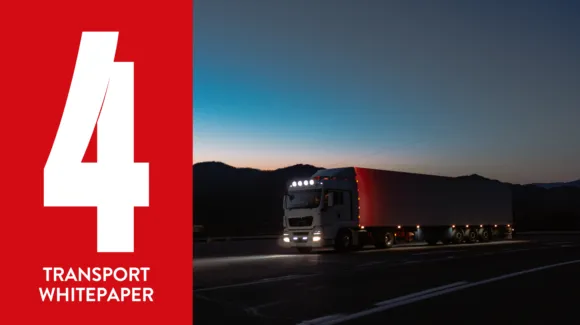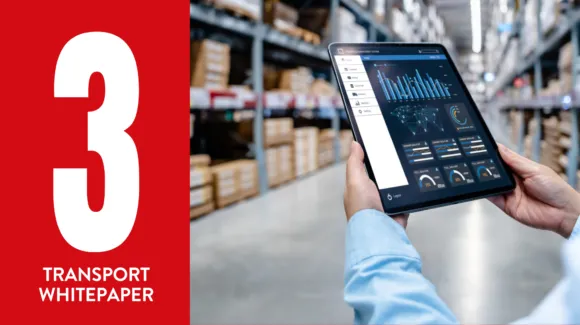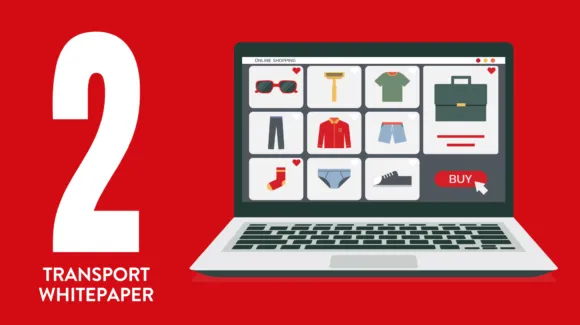One of the major differences between pure e-commerce players and legacy brands that have adopted e-commerce lies in their approach to transportation costs. E-commerce pure-players have typically been early converts to the idea that transport experience (TX) is a key brand differentiator, whereas traditional retailers often remain trapped in a cost-focused mindset. This divergence became particularly apparent during the COVID-19 pandemic, when brands that had not invested in their e-commerce offerings were suddenly exposed due to store closures. Having learned these lessons the hard way, many legacy brands have continued to apply them in the post-pandemic period.
If you don’t know what your customers expect from you, then you’ll only focus on the price of transport solutions, and that means putting the customer experience at risk.
However, despite mounting evidence that strategic TX investment drives brand loyalty, some brands continue to prioritise price over customer experience when making transport procurement decisions. This approach ignores the hidden costs that can arise from focusing solely on carrier pricing. Prioritising the lowest cost can lead to negative outcomes, such as poor delivery experiences, increased customer service calls, customer churn and damage to brand equity – ultimately resulting in greater long-term losses than the initial savings achieved. So, what’s the true cost of investing in exceptional TX to deliver a truly differentiating customer experience? Let’s break it down.
Understanding tx total cost of ownership for fashion brands
To determine the actual cost of your transportation management infrastructure, it’s essential to consider not only per-shipment pricing but also the overall financial implications of service delivery. This necessitates a fundamental shift in the sales conversation. Developing a holistic cost model requires you to account for the entire customer journey, including customer service expenses, repeat purchase potential, brand reputation impacts and operational efficiencies gained through predictive analytics and exception management. For example, when customers are proactively informed of delays thanks to an integrated ‘control tower’ end-to-end monitoring set-up, brands receive fewer customer service calls, enabling employees to focus on other tasks.
However, the fundamental question remains: If a carrier offers you a rate of €4 per parcel, and a fashion-specialist 3PL offers you a rate of €4.25, what are you actually paying for in that additional 25 cents?* The answer lies in understanding the total TX value proposition, rather than just the individual services that you’re paying for.
Cost consideration #1: end-to-end service integration
The transport experience playing field has been comprehensively reshaped in recent years, driven by innovators like Amazon and Zalando. To meet basic customer expectations today, brands require a comprehensive technological and infrastructural ecosystem that extends far beyond simple parcel delivery. This includes online checkout optimisation, out-of-home delivery options, address validation, branded track-and-trace updates, a curated post-purchase experience and seamless returns processing.
Some brands may be tempted to set up or expand their own transport operations. And while building TX capabilities independently may save money in one area, you may be spending the same amount (or more) elsewhere. Beyond the direct costs of each element, there can be significant hidden expenses in terms of the labour required to negotiate contracts with multiple providers, manage integrations and maintain relationships over time. The cost of all these factors can quickly add up, so when comparing in-housing versus outsourcing – or when comparing two potential logistics partners – always check that you’re comparing the total cost of ownership for your TX.
Cost consideration #2: optimising for unified commerce
The modern customer journey is all about seamless integration. Today’s shoppers don't distinguish between digital and physical retail – they expect the same exceptional transport and brand experience, whether they’re ordering from your website, browsing on TikTok, shopping at a pop-up event, or purchasing through Instagram Checkout. It’s therefore essential to meet customers where they are. Indeed, 72% of shoppers from the EU5 countries (the UK, Germany, France, Spain and Italy) say that they’re more likely to choose brands that show up on multiple channels.1 In short, creating a consistent multi-channel presence can be pivotal to ensuring that customers both find you and return.
This shift demands a ‘unified commerce’ approach that consolidates back-end operations into one centralised platform to enable a range of innovative functionalities. But here’s the challenge: traditional transportation management systems aren’t equipped to handle this level of complexity. Take returns, for example. Research shows that customers prioritise flexibility and ease of returns almost as highly as cost and speed of delivery.2 Yet many brands still treat returns as an afterthought, resulting in disjointed returns pathways that frustrate customers and burden operations teams.
On the other hand, an integrated returns strategy can transform this potential pain point into a competitive advantage. When customers can return online purchases in-store, or drop them at convenient locations near their workplace or home, they’ll remember you for your great service. However, many standard carriers can’t provide the significant back-end infrastructure required to achieve this level of integration. Transport experience isn’t just about the end result; it’s also about the systems that support every stage of the process, forming a ‘connective tissue’ that binds all of your sales channels together.
Cost consideration #3: catalysing strategic expansion
Transport management isn’t just about delighting customers today; it’s about building the strategic flexibility to scale those hard-earned loyalty gains tomorrow. Consider market expansion. Entering new territories independently means establishing relationships with local carriers from scratch, often at disadvantageous rates due to low initial volumes. If your brand lacks market presence, you’re essentially fighting on two fronts: building brand awareness while constructing your logistics infrastructure.
The alternative? Partner with a logistics provider that’s already established in your target markets. In this case, an additional 25 cents per package could be securing you access to an international network of ‘local heroes’ – carriers who understand regional preferences and can deliver the relevant local experience your customers expect. This network advantage becomes particularly valuable during supply chain disruptions. When labour strikes or bad weather impact primary routes, having multiple carrier relationships means you can pivot quickly rather than disappointing customers with extended delays. In these situations, this added flexibility can be make-or-break.
Head-to-head cost comparisons: Three critical questions
Before making transport procurement decisions, challenge your assumptions with these strategic questions:
1. Are you truly comparing like-for-like value?
When evaluating two transport solutions, look beyond headline rates. Does the cheaper option include address validation, branded tracking, post-purchase engagement and seamless returns? Or will you need to source these capabilities separately, which could increase the total cost?
2. What’s the real cost of customer churn?
A lower cost per parcel is irrelevant if it results in poor delivery experiences that drive customers away. Brands that focus solely on costs often face a higher customer service burden, with more complaints and ‘Where Is My Order’ requests. Ultimately, this can result in greater customer attrition than the initial savings justify.
3. Will today’s savings create tomorrow's scaling problems?
Opting for the cheapest option now could leave you vulnerable when you need to expand rapidly. Will you be able to launch in new markets quickly? Can you handle peak trading periods like Black Friday without facing capacity constraints?
Cost versus value: reframing the procurement conversation
The uncomfortable truth is that viewing transport purely through a cost lens may seem financially prudent, but it demonstrates a fundamental misunderstanding of the role that transport plays in modern e-commerce. The traditional logic goes like this: spend less per parcel, invest more in product development and marketing. However, this approach ignores the fact that transport experience is instrumental in shaping customer perceptions of your brand. This means that, in today’s fashion landscape, cost per parcel is often an inadequate metric for measuring the effectiveness of transport investments.
The smarter approach? Think in terms of lifetime value – both customer lifetime value and strategic lifetime value. Customer lifetime value considers how the transport experience affects retention, repeat purchases and word-of-mouth recommendations. Strategic lifetime value, on the other hand, examines how transport capabilities can enable market expansion, peak trading success, and competitive differentiation.
In this new transport landscape, the winning question isn’t just “How can I transport my parcels in the most cost-effective way?” but also “How can I differentiate my transport experience sufficiently from competitors to reliably grow customer loyalty?” Finding the answer requires a deep understanding of your customers and markets. And it demands recognition that transport has evolved from a ‘necessary step’ into a strategic brand asset – one that can drive conversion rates, operational efficiency and brand loyalty.
If you only consider volume and price when entering discussions with logistics providers, you risk overlooking the many additional benefits that an exceptional transport experience can deliver. After all, that extra 25 cents you pay per parcel could mean the difference between a satisfied customer and a dissatisfied one. And when you extrapolate that across your entire current and potential customer base? Transport experience can make the difference between slow stagnation and sustainable growth.












